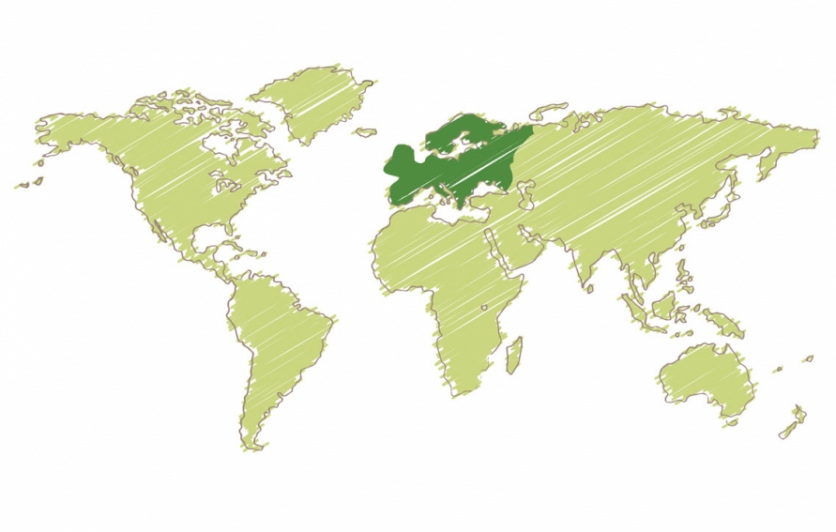Europe/Mediterranean

Broccoli, cauliflower, cabbage, kale, collard greens, rutabaga and turnips are among the wide variety of plants in the mustard family, known as brassicas. Native to Western Europe and the Mediterranean, these diverse and healthful vegetables show up on menus all over the globe. Sauerkraut, made from cabbage, is found in many forms throughout Central and Eastern Europe, but other cultures have their own versions of fermented or pickled vegetables in the mustard family. Try pikliz, the Haitian condiment that adds the bite of pepper, in restaurants in Little Haiti. Curtido, the lightly fermented cabbage relish, is served in Salvadorean and other Central American countries. Don’t miss kimchi, Korea’s spicy side dish of fermented cabbage and radishes, at Asian markets and restaurants.
Foods from Europe and the Meditteranean
BEETS (Beta vulgaris), domesticated in the Middle East, were grown by the ancient Greeks, Romans and Egyptians. Traders carried cultivated beets on trade routes to Asia and India. Originally, beets were eaten for their leaves, like chard; plump beet roots were developed in the sixteenth century.
CABBAGE (Brassica oleracea) belongs to the brassica family, related to broccoli, collard greens, and cauliflower, descended from wild cabbage and domesticated in Europe before 1000 BC. First brought to the Americas in 1541, cabbage was planted by colonists and Native Americans by the eighteenth century.
FENNEL (Foeniculum vulgare), an aromatic flowering plant in the carrot family, is native to the Mediterranean and grows wild throughout North America, Asia and Europe. Grown for its aromatic seeds, delicate leaves and fleshy bulbs, fennel is used in Indian, Middle Eastern and Chinese cooking.
LEEKS (Allium ampeloprasum), related to onions, are an ancient crop native to the Middle East and the Mediterranean. Romans likely brought leeks to Europe and the British Isles, where they are an essential ingredient in soups.
LETTUCE (Lactuca sativa) is native to the Mediterranean, first cultivated in Egypt for the production of oil from seeds and as a medicinal herb. Romans cooked and served leaves with dressing. Common cultivars include looseleaf, romaine, iceberg and butterhead.
TURNIPS (Brassica rapa), from the Mediterranean and Afghanistan, were cultivated in Europe before being introduced to China and Japan. Boiled greens are rich in vitamin A, while the root has a moderate amount of vitamin C.
Brassicas – kale, cabbage, turnips, broccoli – are among the healthiest veggies we grow at Grow2Heal. These cruciferous vegetables are low in calories, and rich in folate and fiber.
Make It Yourself
Communities Near You
What’s happening near you
Visit Lauderdale Food & Wine Festival returns January 13-19, 2025
Las Olas Oceanside ParkFort Lauderdale







